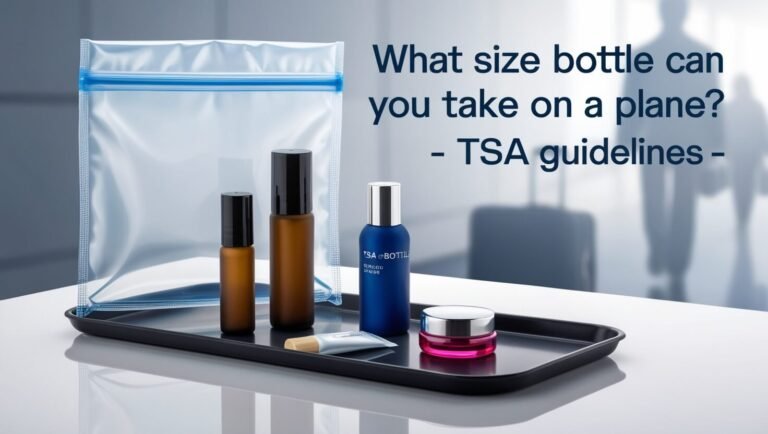When to Change Bottle Nipple Size: When and How to Switch

As your baby grows, their feeding needs change. The bottle nipple size you once used might not fit anymore. This guide will help you understand when to switch to a bigger nipple. It’s all about finding the right flow rate and size for your baby’s needs.
Wondering when to change your baby’s bottle nipple size? Learn the signs that show it’s time for a bigger one. This ensures your baby stays comfortable and feeds well.
Baby Bottle Nipple Flow Rates and Levels
As babies grow, their feeding needs change. Choosing the right bottle nipple size is key. Nipples vary in flow rates, from slow to fast, to meet your child’s needs.
Understanding Flow Rate Categories
Bottle nipple flow rates are divided into four main groups: preemie, slow, medium, and fast. These categories help parents pick the best nipple for their baby’s age and feeding skills.
Age-Based Nipple Size Chart
- Level 0 (Preemie): 0-3 months
- Level 1 (Slow): 0+ months
- Level 2 (Medium): 3+ months
- Level 3 (Fast): 6+ months
- Level 4 (Extra Fast): 9 months and older
Different Brand Flow Systems
Many bottle brands use similar flow rate categories. But, they might name them differently. For example, Dr. Brown’s has eight nipple levels, from preemie to fast flow. Brands like Philips Avent and Tommee Tippee might use numbers or descriptive terms.
The flow rate of a nipple can also change based on the formula or breast milk used. Adding thickening agents can affect it too. It’s important to watch your baby’s feeding cues and adjust the nipple size for a comfortable feeding experience.
| Bottle Brand | Nipple Flow Levels | Recommended Age |
|---|---|---|
| Dr. Brown’s | 8 Levels (Preemie to Fast) | 0+ months |
| Philips Avent | 4 Levels (0, 1, 2, 3) | 0+ months |
| Tommee Tippee | 4 Levels (Slow, Medium, Fast, Extra Fast) | 0+ months |
When to Change Bottle Nipple Size
Choosing the right bottle nipple size is key for your baby’s feeding. It’s not just about age. You should watch how your baby feeds and grows. Here are signs it’s time to change the nipple:
- Your baby is sucking fiercely or the nipple is inverting during feeding
- Your baby is becoming frustrated or taking longer to finish a bottle
- Your baby is falling asleep at the bottle or consuming only small amounts, yet still showing hunger soon after
But these signs might mean other issues, like gas or intolerance. Watch your baby’s feeding closely and talk to your pediatrician if worried. Some babies use the same nipple for a long time.
Bottle nipples should be replaced every two months if damaged or weak. Plastic bottles last 4-6 months, while glass ones can last longer with care. Sterilize bottles well and avoid too much UV light to keep them in good shape.
| Nipple Flow Rate | Recommended Age Range |
|---|---|
| Slow Flow | 0-3 months |
| Medium Flow | 3-6 months |
| Fast Flow | 6-12 months |
The secret to good bottle-feeding is watching your baby’s feeding cues. Adjust the nipple size based on their needs, not just age. This way, you can make feeding comfortable and efficient as they grow.
Signs Your Baby Needs a Different Nipple Flow
Keeping your baby happy and comfortable during bottle feeding is key. As they grow, their feeding needs can change. It’s important to know when it’s time to switch the bottle nipple flow. By listening to your baby’s cues, you can make feeding time smooth and enjoyable.
Indicators of Too Slow Flow
- Fierce sucking or nipple inversion
- Frustration and longer feeding times
- Falling asleep at the bottle or taking small feeds with frequent hunger
Symptoms of Too Fast Flow
- Milk spilling from the mouth
- Gagging, spitting up, or gulping
- Forceful swallowing, coughing, or turning away from the bottle
- Digestive issues or squirminess after feeding
Safety Warning Signs
Always check the bottle nipple for wear and tear. Look for changes in color, thinning, stickiness, swelling, cracks, tears, or breaks. To test its strength, gently pull on the bulb; it should return to its original shape without deforming.
By watching for these signs, you can make sure your baby’s bottle feeding is comfortable and meets their needs. Remember, keeping an eye on the nipple flow and making adjustments can greatly improve your baby’s feeding experience and growth.
Special Considerations for Breastfed Babies
When introducing a bottle to breastfed babies, start with paced bottle feeding and slow-flow nipples. This is true for any age. It helps avoid nipple confusion and bottle preference, which can harm breastfeeding.
Some breastfed babies might not need bigger nipples. The effort of nursing is enough for slow-flow nipples. But, watch for feeding cues. Babies with fast letdowns or high milk flow might need transitioning nipple sizes for comfort.
If you’re not sure what to do, talk to a lactation consultant. They can give you advice tailored to your baby. They help balance bottle and breastfeeding for a smooth feeding experience.
“The choice of bottle can impact how a baby feeds; bottles do not necessarily need to mimic breastfeeding but should encourage optimal feeding behaviors to support the breastfeeding relationship.”
Closing Thoughts
Choosing the right bottle nipple size is key for your baby’s comfort and safety. Watch for feeding cues and behaviors to know when to switch. Age-based guidelines are helpful, but remember, every baby is different.
It’s important to check bottle nipples often and replace them when needed. Look for cracks or discoloration. Replace them every two months or sooner if necessary. Sterilizing your baby’s feeding gear helps keep it clean and safe.
For specific advice on finding the right nipple size, talk to healthcare providers or lactation consultants. They can guide you in choosing the best nipple for your baby’s needs. Be open to trying different sizes and flows to find the perfect one for your when to change bottle nipple size, baby feeding cues, and age-appropriate nipples.
Most Popular Questions:
What are the different bottle nipple flow rates and levels?
Baby bottle nipples come in various sizes and flow rates. They match a baby’s age, feeding needs, and milk flow preference. Nipple levels range from Level 0 (Preemie) to Level 4 (9 months and older). Flow rates include preemie, slow, medium, and fast.
What is an age-based nipple size chart?
An age-based nipple size chart goes from Level 0 (Preemie) to Level 4 (9 months and older). Brands use different names, like numbers (0, 1, 2, 3) or descriptive terms (preemie, slow, medium, fast).
How do different brands handle bottle nipple flow systems?
Brands like Dr. Brown’s offer eight nipple levels for a perfect fit. Flow rates can change with different nipple types and formula types.
When should I change my baby’s bottle nipple size?
Change the nipple size based on the baby’s feeding behavior and skill. Look for signs like sucking too hard, nipple inversion, and frustration during feeding. Also, watch for longer mealtimes, falling asleep at the bottle, or eating small amounts but showing hunger soon after.
What are the signs that my baby needs a different nipple flow?
Signs of too slow flow include fierce sucking, nipple inversion, and frustration. Also, look for longer feeding times, falling asleep at the bottle, and small feeds with frequent hunger. Too fast flow signs are milk spilling, gagging, spitting up, gulping, and forceful swallowing. Other signs are coughing, turning away from the bottle, digestive issues, and squirminess after feeding.
What safety warning signs should I look for in bottle nipples?
Watch for color changes, thinning, stickiness, swelling, cracking, tearing, or breaking in the nipple. Test the nipple’s strength by pulling on the bulb. It should return to its original shape.
How should I choose a bottle nipple for my breastfed baby?
For breastfed babies, start with “level one” or slow-flow nipples. This prevents nipple confusion and bottle preference. These nipples need similar effort as nursing. Some breastfed babies may never need a bigger nipple size. Watch for feeding cues and level up if the nursing parent has a fast letdown or breast milk flow.




